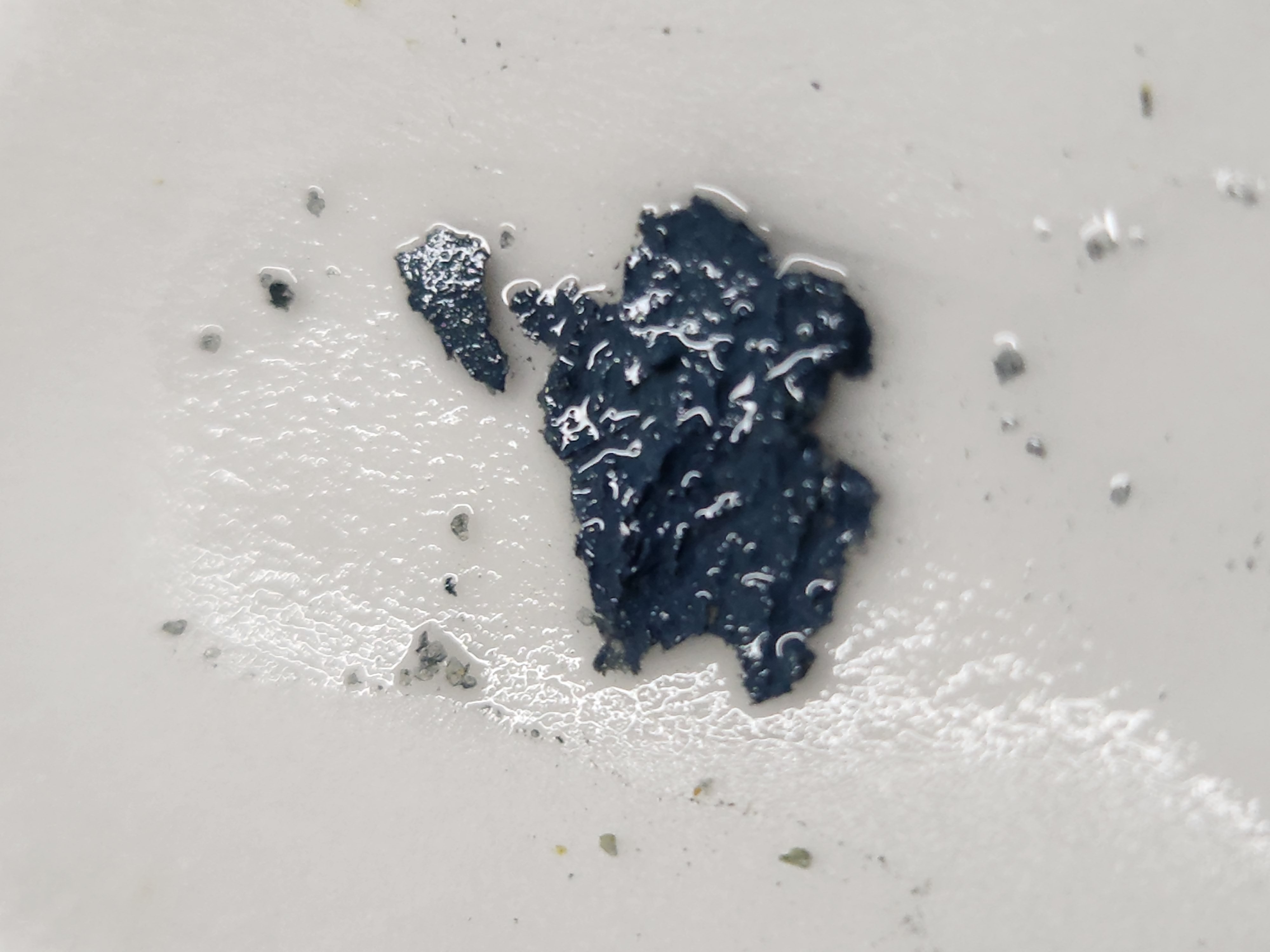What you are seeing is tungsten. Tungsten is slightly soluble in highly acid solutions, when the solution is diluted the tungsten precipitates. Depending on the valence and pH of the tungsten it can change from a liquid (orange-brown) color to yellow with a tint of green when oxidized:
Tungsten Oxides
and when the solution or the tungsten oxides are exposed to a reducing agent, they turn a dark cornflower blue or olive drab:
The above photo is of the yellow tungsten oxide powder with a few drops of stannous chloride added.
If you have a bucket or beaker that has developed a bright yellow stain on the wall, this is tungsten oxide.
I have mention
ed this over and over again, but no one seems to listen. Do not process your ceramic CPUs with gold plated copper-tungsten alloy heat spreader tops directly in AR. If you do, you will have tungsten sneak into your precipitates, prolong melting, foul your beakers, and fool your stannous chloride. The notion that all ceramic cpus get processed together is another refiners myth that has been perpetuated across the internet, even on 'respected' web sites. It seems people will use the term GIGO (Garbage In Garbage Out) but they do not understand it as they promote adding all types of ceramic cpus together in AR (Aqua Regia). Forget what you have learned about processing ceramic cpus if this is the manner in which you were taught to run them.
To avoid the types of problems the OP is seeing you must not toss all of your ceramic CPUs into a mix of AR. Sort the various types by grade and construction. Each type gets processed differently. When 'gold topped' ceramic cpus are
properly processed, the tungsten heat spreaders slide off in one piece and the tungsten can easily be collected without any problems.
Properly removed tungsten plates from gold topped ceramic cpus:
It's obvious from this thread that tungsten chemistry is not understood by most refiners here. Perhaps I'll do video dedicated to tungsten to let you guys in on a few 'secrets' of tungsten. Even if I don't, I'm sure someone will after seeing this post. Prove it to yourself by collecting some of that yellow powder you have left after processing ceramic gold topped cpus. Place some in a spot plate or on a cotton swab and add a few drops of stannous... it will change
to cornflower blue as seen in the second post above and my photos. If you have a beaker with a yellow ring around it add some diluted sodium hydroxide solution and watch it miraculously vanish. If you want to see how tungsten can fool you into think
ing you have gold, place a piece of a tungsten plate in a beaker and heat with concentrated AR. You'll see a lot of bubbles and the solution readily will turn orange-brown. Decant the solution and dilute it with twice it's volume of water and watch the tungsten reappear as a fine yellow powder. Now imagine if you had gold in the solution with the tungsten and filtered it while it is concentrated. After filtering clear you add some water and wonder why a precipitate is forming, it's tungsten in your AR.
If you do not add tungsten to your reactions you will not have to deal with it in your gold.
Tungsten can be found in some jewelry as well. It is possible that you could boil the batch of jewelry in 30%+ peroxide followed by diluted sodium hydroxide before processing to remove the bulk of the tungsten.
AR has it's merits and is a great tool for refining, but it's misuse reminds me of a Confucius quote:
Confucius Says said:
One must not use an ax to remove a fly from a friends forehead.
It amazes me how much misinformation on the use of AR can be found on the internet.
Sorry for the long post, but the subject of tungsten is an important one that has been largely ignored here. I know the OP is processing karat, but it's obvious to me he has made a tungsten compound. I figured this is as good a place as any to rant about tungsten.
Steve













































































